Designing Spaces for Children: Color
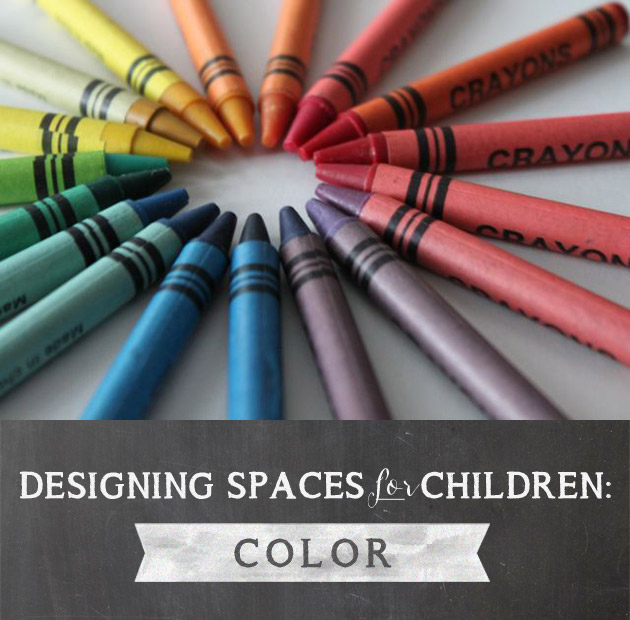
Color is all around us, and part of everything we perceive. It affects us deeply and often we are unaware of its impact on how we feel and behave. When creating spaces for children, it is important to consider the overall impact of color. Most environments for children include a lot of color – from toys, furniture, even the clothing children wear – and sometimes too much color can have a dizzying and over stimulating effect.
Much like adults, children thrive in spaces that include both energizing and calm elements. So, how can you use color to create a space for children that is both energizing and calm? One of the simplest ways to consider color in your space is the presentation and organization of materials.
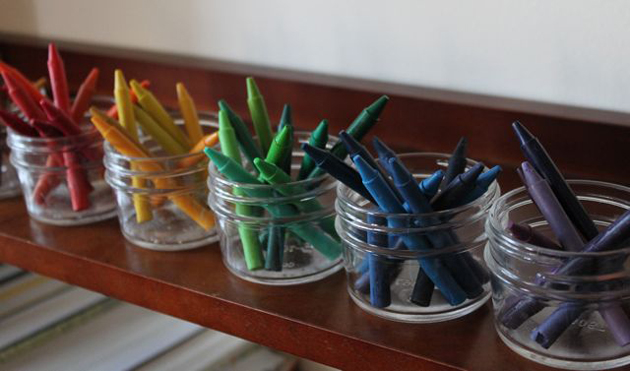
Art materials are rich in color and naturally attract the attention of children (and adults, too!) Organizing crayons by individual color brings them to life and encourages exploration. It creates a sense of order and is pleasing to the eye.
When materials are organized it’s easier for children to find the right color to express their unique point of view. The National Bureau of Standards estimates that the human eye can distinguish over 10 million different colors. Wow! With so many colors out there, we want to offer children opportunities to notice the subtle nuances of color and develop their own personal preferences.
Materials can also be organized by warm and cool colors. Warm colors consist of reds, oranges, and yellows, while cool colors are blues, greens and purples. These crayons are in glass jam jars but any clear container will do.
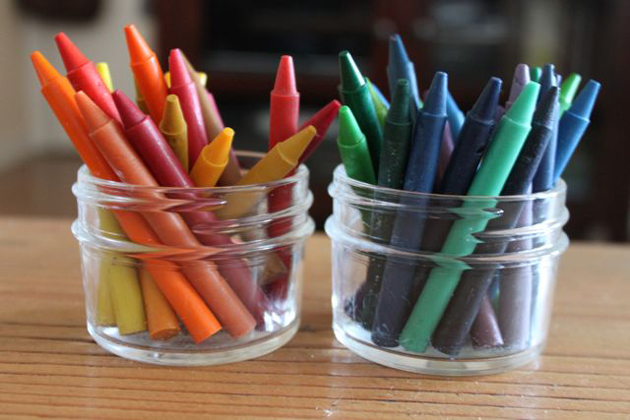
Some materials seem to naturally invite organization by color. Small tea light votives positioned next to a large bowl of beads encourages them to be sorted.
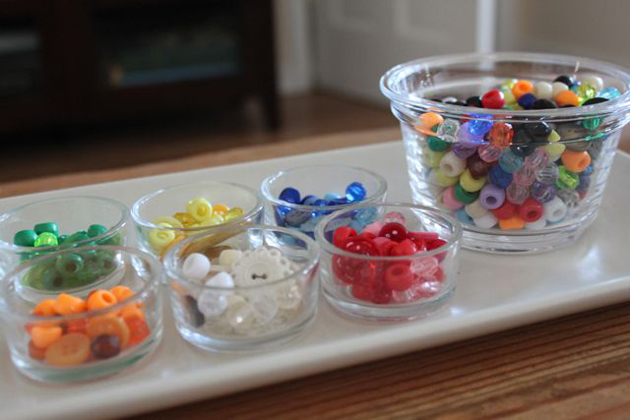
I love to make watercolors with children. And the best part, if you can’t find the color you’re looking for, it’s time to mix your own!
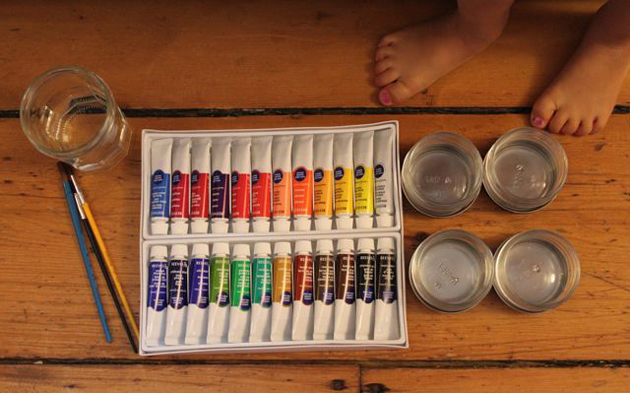
Color mixing is such a fun activity for children and can be explored with a set of watercolors like these or with other paints. I like to use the three primary colors red, yellow, and blue, and also include white with a small amount of black to explore tints and shades.
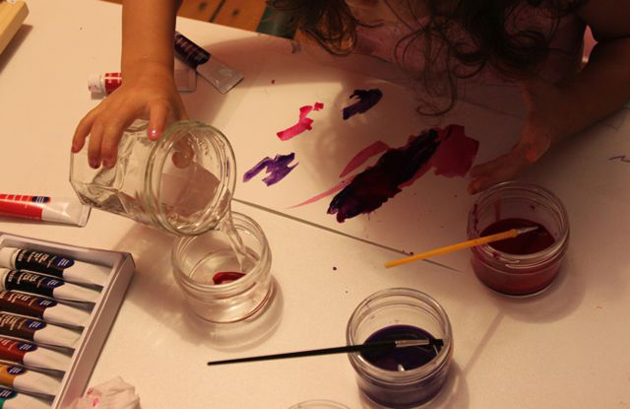
Displaying materials in interesting places can add visual richness to your space. When not in use, watercolors can be placed on a nearby windowsill or shelf where they are sure to evoke a sense of wonder as light passes through each color.
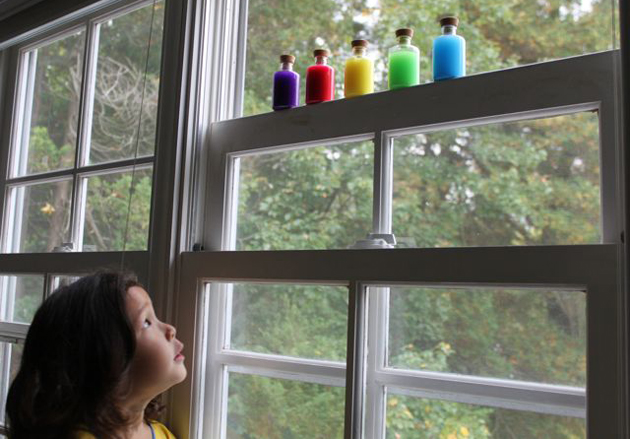
Organizing art materials are just one way to think about color. How do you use color in your spaces for children?
Sign-Up Now!
For more inspiration on creating spaces for children, check out our Playful Learning Spaces Workshop.
Start: November 4, 2014
End: November 21, 2014
To register, click here.
https://vimeo.com/70405462
